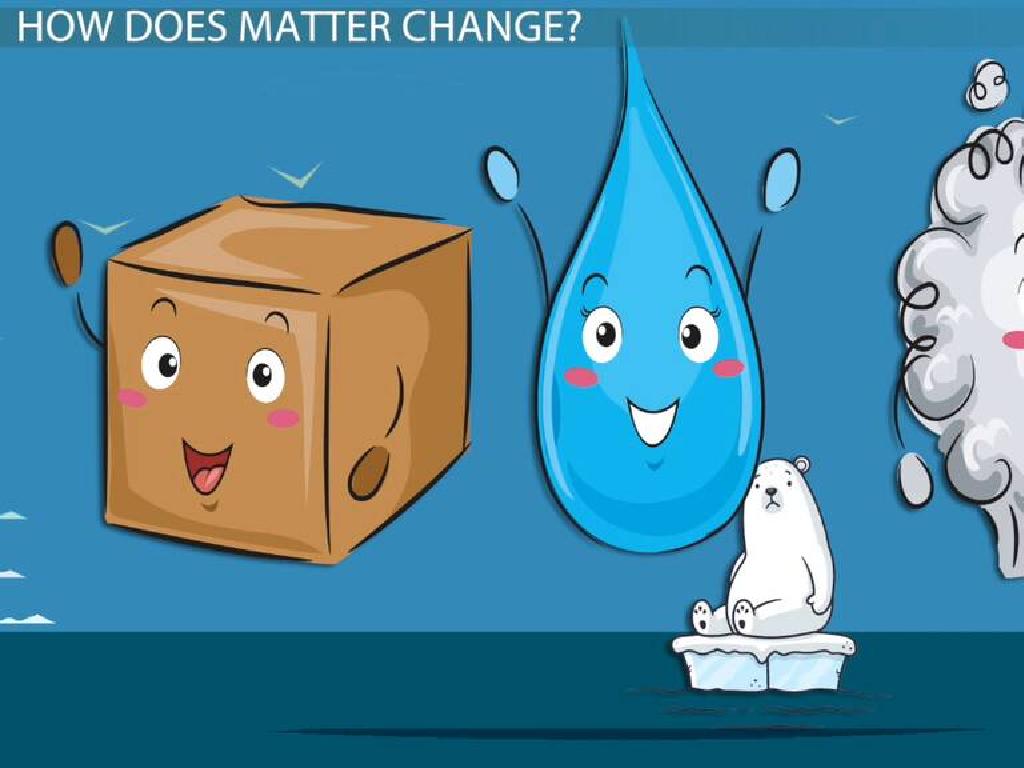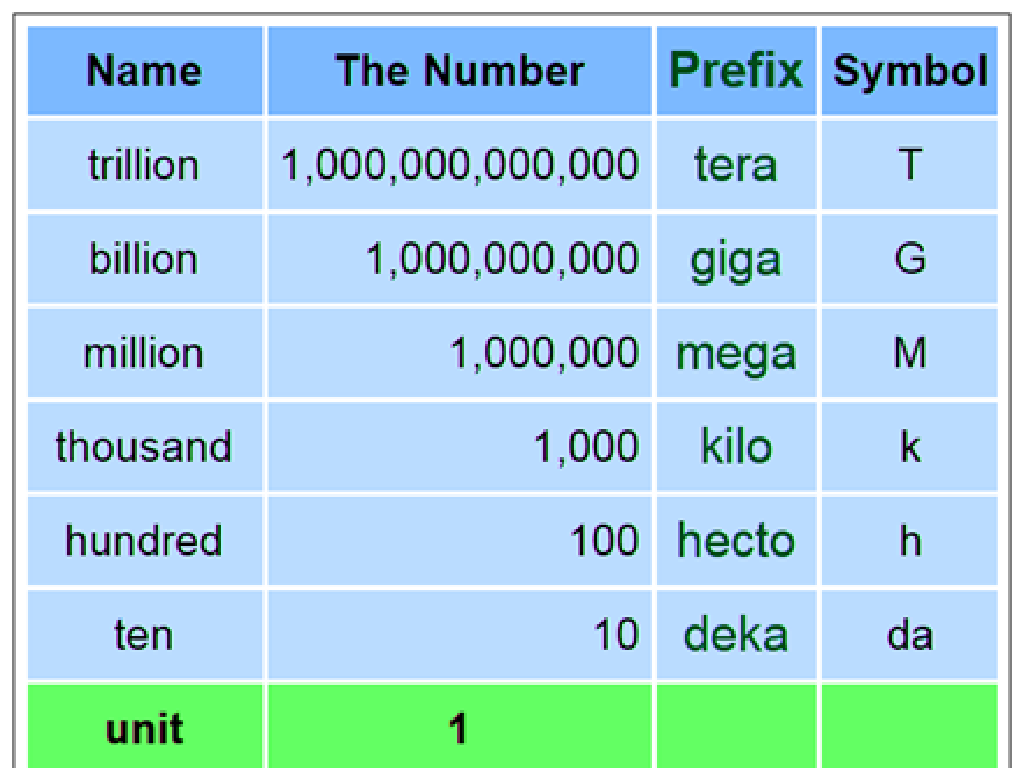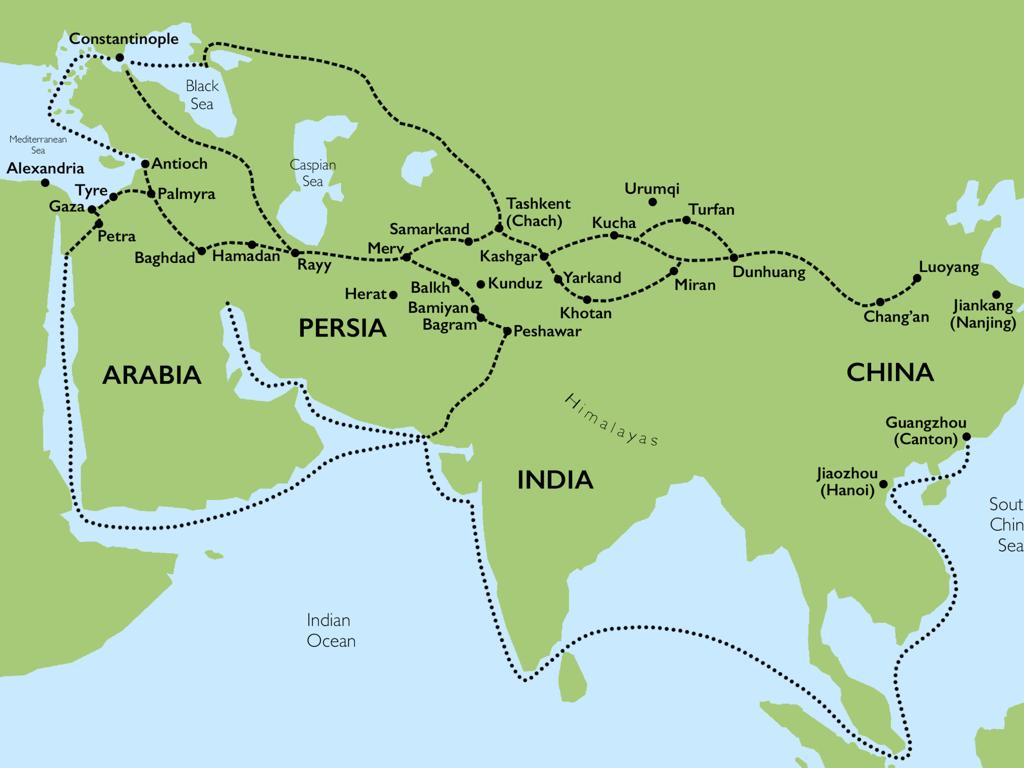Convert Between Celsius And Fahrenheit
Subject: Math
Grade: Sixth grade
Topic: Units Of Measurement
Please LOG IN to download the presentation. Access is available to registered users only.
View More Content
Temperature Units: Celsius & Fahrenheit
– Understanding Celsius & Fahrenheit
– Celsius (°C) is used worldwide, Fahrenheit (°F) mainly in the U.S.
– Reasons for different temperature units
– Historical development led to different units for measuring temperature.
– Geographic usage of units
– Celsius is common in most countries, Fahrenheit is used in the United States.
– Converting between units
– Use formulas: °F = (°C × 9/5) + 32 and °C = (°F – 32) × 5/9 for conversion.
|
This slide introduces students to the concepts of Celsius and Fahrenheit temperature scales. It’s important to explain that different units exist due to historical reasons and that they are used in different parts of the world. Celsius is the standard in most countries and is part of the metric system, while Fahrenheit is used in the United States. Emphasize the practicality of knowing both units and being able to convert between them, as this is a useful skill in science and when traveling. Provide examples of temperatures in both scales for common things like freezing point of water (0°C or 32°F) and body temperature (37°C or 98.6°F).
Understanding Celsius
– Celsius: Scale for temperature
– Based on water’s key temperature points
– 0 degrees: Water freezes
– At sea level under standard conditions
– 100 degrees: Water boils
– At sea level under standard conditions
– Widely used in science and globally
|
The Celsius scale is a temperature scale used globally and is especially common in scientific contexts. It is based on the freezing and boiling points of water, with 0 degrees representing the freezing point and 100 degrees the boiling point, both measured at sea level under standard atmospheric conditions. This scale is part of the metric system and is used by most countries around the world for daily weather reports, in cooking, and in science. It’s important for students to understand Celsius as it relates to the metric system and how it differs from the Fahrenheit scale commonly used in the United States. Students should be able to convert between Celsius and Fahrenheit to better understand temperature measurements in different contexts.
Understanding Fahrenheit
– Fahrenheit scale basics
– A temperature scale where water’s freezing point is 32°F and boiling point is 212°F.
– Freezing & boiling points
– 32°F is where water turns to ice, and 212°F is where it starts to boil.
– Fahrenheit’s use in the U.S.
– It’s the primary scale for weather, cooking, and more in the United States.
– Daily temperatures in Fahrenheit
– Consider how weather forecasts are presented in Fahrenheit.
|
This slide introduces students to the Fahrenheit temperature scale, which is predominantly used in the United States. It’s important to highlight the key reference points of 32 degrees for freezing and 212 degrees for boiling. Explain that these reference points are based on the physical properties of water. Emphasize that understanding Fahrenheit is crucial for daily activities such as following weather forecasts, cooking, and science experiments. Provide examples of typical temperatures for different seasons or times of day to help students relate to the concept. Encourage students to think about how the temperature feels at different degrees in Fahrenheit.
Comparing Celsius and Fahrenheit
– Understand Celsius & Fahrenheit
– Celsius is used worldwide, Fahrenheit mainly in the U.S.
– Find the point where scales match
– Celsius and Fahrenheit are equal at -40 degrees.
– Discuss the importance of both units
– Knowing both is crucial for science and travel.
– Learn conversion formulas
– C to F: (C × 9/5) + 32, F to C: (F – 32) × 5/9
|
This slide aims to highlight the differences and similarities between Celsius and Fahrenheit temperature scales. Students should understand that Celsius is commonly used around the world, while Fahrenheit is primarily used in the United States. It’s important to know both for scientific purposes and when traveling to different countries. The unique point where both scales read the same, -40 degrees, can be a fun fact to engage students. Emphasize the practicality of being able to convert between the two, and ensure students practice using the conversion formulas provided. This knowledge is not only part of their curriculum but also a life skill.
Temperature Conversion Formulas
– Fahrenheit to Celsius formula
– Subtract 32 from the Fahrenheit, then multiply by 5/9
– Celsius to Fahrenheit formula
– Multiply the Celsius by 9/5, then add 32
– Importance of memorization
– Practical application
– Use these formulas to convert temperatures in daily life
|
This slide introduces students to the essential formulas for converting temperatures between Fahrenheit and Celsius. Understanding these conversions is crucial for interpreting weather reports, cooking, and science experiments. Encourage students to memorize these formulas as they are fundamental to working with temperature units. Provide examples to illustrate the conversion process, such as converting room temperature or boiling point of water. Practice problems can be given as homework to reinforce the concept. During the next class, review the homework and address any difficulties students encountered.
Converting Temperatures: Celsius & Fahrenheit
– Convert 68°F to Celsius
– Use the formula: (68°F – 32) × 5/9
– Convert 20°C to Fahrenheit
– Apply the formula: (20°C × 9/5) + 32
– Practice with more examples
– Work through additional conversions as a class
|
This slide is aimed at helping students understand the process of converting temperatures between Celsius and Fahrenheit. Start by explaining the formulas for conversion: (F – 32) × 5/9 = C and (C × 9/5) + 32 = F. Use 68°F as an example to demonstrate the first conversion to Celsius, and then use 20°C to show the conversion to Fahrenheit. After these examples, engage the class with a few more practice problems to solidify their understanding. Encourage students to set up the conversion formulas and solve them step by step. Provide immediate feedback and support as needed. This practice will help students become comfortable with the concept of temperature conversion.
Hands-On Activity: Temperature Hunt
– Find temperatures around the school
– Convert temperatures to both units
– Use the formulas: (°C × 9/5) + 32 = °F and (°F 32) × 5/9 = °C
– Record your Celsius and Fahrenheit findings
– Share results with the class
|
This activity is designed to give students a practical understanding of temperature conversion. Have students search for various temperature readings around the school, such as from a thermostat, refrigerator, or outdoors. They should then use the conversion formulas to translate these temperatures into both Celsius and Fahrenheit. Encourage them to record their findings clearly. Possible activities include comparing classroom temperatures, checking the temperature of water from different sources, or measuring the outdoor temperature throughout the school day. After gathering data, students will present their findings to the class, fostering a collaborative learning environment.
Class Activity: Temperature Conversion
– Convert weather report temperatures
– Change Celsius to Fahrenheit and vice versa
– Adjust recipe temperatures
– For baking, accurately switch oven settings
– Apply conversions in daily life
– Discuss how temperature affects various aspects of life
|
This activity aims to provide students with practical applications of converting temperatures between Celsius and Fahrenheit. Start by showing a weather report and asking students to convert the temperatures. Then, present a recipe and have them adjust the oven temperature from Fahrenheit to Celsius. Discuss the importance of this skill in cooking, science, and travel. For the activity, divide the class into small groups and assign different scenarios to each group, such as converting temperatures for a travel itinerary, adjusting cooking temperatures for a recipe, or interpreting a science experiment’s data. This will help them understand the relevance of temperature conversion in everyday life.
Quiz Time: Temperature Conversion!
– Test your conversion skills
– Use the formulas to convert
– Celsius to Fahrenheit
– Example: Convert 20°C to °F
– Fahrenheit to Celsius
– Example: Convert 68°F to °C
|
This slide is an interactive quiz to assess students’ understanding of converting temperatures between Celsius and Fahrenheit. Provide students with the formulas for conversion: °F = (°C × 9/5) + 32 and °C = (°F – 32) × 5/9. Encourage them to apply these formulas to convert temperatures in both directions. For instance, converting 20°C to Fahrenheit: (20 × 9/5) + 32 = 68°F, and converting 68°F to Celsius: (68 – 32) × 5/9 H 20°C. Have a variety of temperatures ready for students to convert, and consider timing the quiz for added challenge. After the quiz, review the answers as a class and clarify any misconceptions.
Quiz Time: Temperature Conversion!
– Test your conversion skills
– Use the formulas to convert
– Celsius to Fahrenheit
– Example: Convert 20°C to °F
– Fahrenheit to Celsius
– Example: Convert 68°F to °C
|
This slide is an interactive quiz to assess students’ understanding of converting temperatures between Celsius and Fahrenheit. Provide students with the formulas for conversion: °F = (°C × 9/5) + 32 and °C = (°F – 32) × 5/9. Encourage them to apply these formulas to convert temperatures in both directions. For instance, converting 20°C to Fahrenheit: (20 × 9/5) + 32 = 68°F, and converting 68°F to Celsius: (68 – 32) × 5/9 H 20°C. Have a variety of temperatures ready for students to convert, and consider timing the quiz for added challenge. After the quiz, review the answers as a class and clarify any misconceptions.






